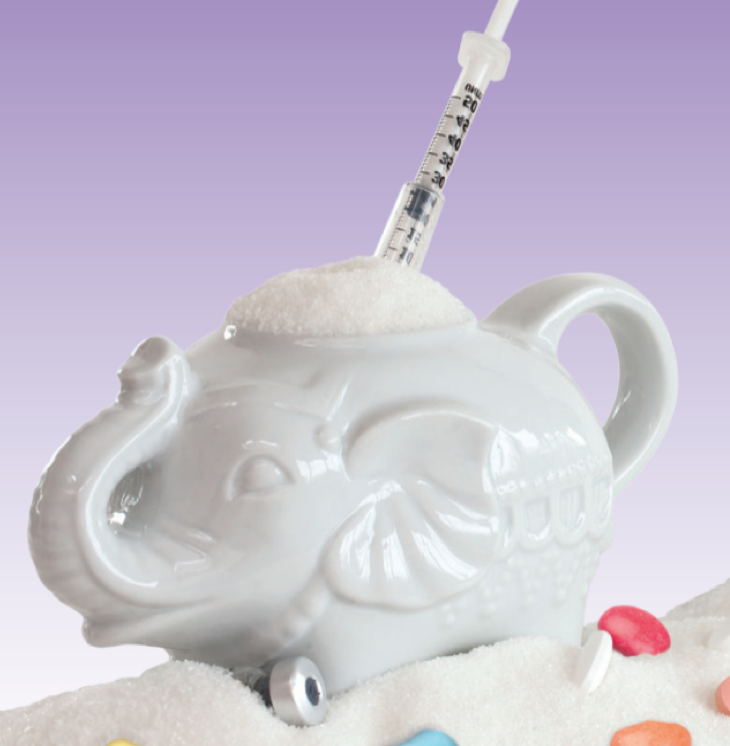The Beating Diabetes approach to healthy eating
All diets work for someone, no diet works for everyone.
I frequently get asked ‘what constitutes healthy eating?’ This prompted me to write a leaflet for my patients, particularly those with a weight problem, Pre-diabetes, or Type-2 Diabetes. The two Tables below list the foods you should be choosing to eat (In-Foods) and the ones you should be avoiding (Out-Food). These are of course my own personal opinions and you should be aware that (presently) they are contrary to the usual/official dietary advice you may be given. So, caution; it is heresy.
I originally called my advice the ISAIAH-approach (Insulin Sensitivity And Its Applications to Health) following research I did previously into the prevention of diabetes. The ISAIAH-approach is not a weight reducing diet, although you may lose weight on it; nor is it presented as presented a cure for diabetes of any other disease although it may help in your management of some of them. The ISAIAH approach has now morphed into Beating Diabetes the Low-carb Way.
A dilemma: which dietary theory to try?
The official low-fat/low-cal’ diet advice says that being overweight causes disease, and reducing calorie intake or increasing calorie expenditure (exercise) are its remedies. Calories are the thing (calories in/calories out). If the balance is negative you will lose weight. And because fatty foods are ‘calorie dense’ the less fat you eat the better – plus fat they say is linked to heart disease so the less fat the better all round.
The Beating Diabetes approach is different. It says your body will generally look after itself as long as you feed it properly. Modern high-carb and processed food laden diets evoke excessive Insulin responses, and Insulin-excess, in turn, drives many other problems. Cut your Insulin, and for most people weight and health are likely to look after themselves with pills or operations. All carbs’ cause blood sugar levels to rise during digestion and all evoke an Insulin response. Insulin is the body’s way of bringing sugar levels down. It converts any excess sugar into fat, shoves it into fat cells and stops it getting out. Yup, eating sugary and starchy foods makes you fat and keeps you fat. All carbs’ cause sugar levels to rise but some do so far more than others. And these are the ones to minimise or avoid. Beating Diabetes sees being overweight a sign of body chemistry disturbance. An ‘Insulin dominated’ metabolism (code words for the normal British diet) disturbs blood sugar and cholesterol, and promotes weight gain. But surely you may say ‘that must be wrong? Aren’t calories and fat bad?’ Well, no actually. To quote one authority on the subject, maybe we have all been sold a “big fat lie”.sold ‘a big fat lie’.
The two tables that follow are reproduced from my book Beating Diabetes the Low-carb way. To find out more just click on Published Work on the black tool-bar
| Out Foods | Out Foods are ones that cause blood sugar levels to rise rapidly and stay up for a long time. They oblige the body to pump out extra insulin. And too much Insulin is a huge problem these days. So minimising your consumption of the foods listed below. |
| Bread… | Flour is starch, a carb’ made from chains of glucose. If you must have it, then eat it; but small portions, an occasional treat. If you must have it frequently then stop reading now and give this leaflet to someone else |
| … and other flour products | Sorry Mary Berry, biscuits, cakes, crispy snacks, pastries, bagels, croutons… its all starch and that means high-energy carb’s. Avoid |
| Rice | That S-word again. Another starchy grain. Small portions, occasional servings. If you must have rice frequently… stop reading now |
| Potatoes | ‘Pete the potato is an energy food’ and that energy is starch (glucose chains). I like chips but have then only two or three times a year – an occasional treat, part of a feast rather than one of my staples |
| Beer | … or liquid bread. Unlike wine beers and lagers are made from malted barley, and malt (or maltose to give it it’s proper name) is a sugar. I enjoy a pint myself but it’s an occasional treat and not a regular thing now |
| Fruit | Ignore the propaganda. Fruit is ‘high fructose tree candy’. Fruit is not a health food. Eat it if you enjoy it, but eat it whole. So… no smoothies, no fruit juices, no fruit in syrup or sprinkling it with sugar either. Aim for a maximum of one small portion per day. Only eat fruit for pleasure, not health |
| Berries | A small handful, two or three times a week is fine. Again, eat them whole. No juicing |
| Sugar | The ultimate nutrition-free edible product (I cannot bring myself to call it a food). It’s hidden in almost every processed food you buy now, even bran flakes and muesli. Read food labels, hunt it down and assiduously avoid! And look out for weasel ways of sneaking sugars into foods without mentioning them directly on the label – dextrose, fructose, corn-syrup, honey to name but four. Sugar is hidden in things like tomato ketchup, non-diet cola drinks and many cocktails, and of course it is the main ingredient in confectionery. Table sugar (sucrose) is half fructose, half glucose. Fructose in anything other than small amounts is a health hazard. Avoid! |
| Don’t panic | Actually there are no banned foods with the ISAIAH approach, just make sure that any ‘Out-Foods’ you eat are feature infrequently and in small portions… and are worth it (i.e. make sure you enjoy them) |
| In Foods | Pick your foods mainly from this list. There are plenty to choose from. |
| Meat | All meat is acceptable – as long as it’s not in pies or pastry, breaded or battered. Do not worry about fat but beware gravy (often made with flour or potato starch). Watch out when buying processed meats like sausage which can hide bread or rusk in their recipe |
| Fish | All seafood is acceptable – as long as it’s not battered or breaded, or accompanied by portions of chips. Fish, mussels, prawns, scallops, calamari, roe are all fine. Enjoy |
| Dairy | Good in moderation. Enjoy cheese but not on toast or in sandwiches. Caution with yoghurt, some hide a lot of sugar. Anything called low-fat is in usually high-sugar! |
| Vegetables | All true vegetables are fine. Boil, bake, shred, stir-fry, steam or spiralise them; even eat them raw. Potatoes are the exception |
| Poultry | All fowl is fair, but again not battered or breaded and not in floury sauces, nor in sandwiches or pies |
| Eggs | Go to work on an egg, have a day-off on an egg, but no Scotch eggs with their breaded coats on |
| Beans and pulses | Beans and lentils are fine in small quantities. But if you get them from a tin read the label first. Some are sweetened with sugar and thickened with flour |
| Nuts | Nuts are fine, but avoid nuts in chocolate (or anything else) |
| Sauces | Beware, many hide flour or potato starch. Real mayonnaise is fine if it’s the proper stuff made with egg and oil. If a label says ‘low fat’ avoid it as it almost always means ‘added sugars and starch’ |
| Wine | … is fine in moderation and as long as its dry, not sweet. Champagne they say, of all the wines, has the lowest effect on blood sugar. Spirits have no direct effect on blood sugar at all but because of their potency should be enjoyed only occasionally |
| Sweeteners | Saccharin, aspartame etc.. For me the jury is out. Any industrially produced edible substance is suspect, even if it’s zero-cal |
| 5-a-Day? | Yes, but only if they are In-Food vegetables… not Out-Food fruit! |

This cartoon, believe it or not, is a parody of what happens so often when someone is identified as having Tye-2 Diabetes.
Nevertheless. please do not make any dietary changes without discussing things with your health professional. This is vital if you are taking medication for diabetes. Good luck.
(Picture credits: Shelley Nott for the ‘elephant in the room’ and (sadly) anon for the cartoon)

